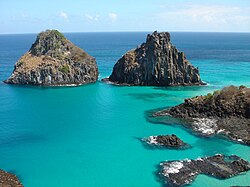It has been suggested that List of gulfs be merged into this article. (Discuss) Proposed since March 2025. |


A Gulf is a large, deep inlet from the ocean into the landmass, typically larger and more enclosed than a bay, with a narrower opening to the sea. [1] [2]

